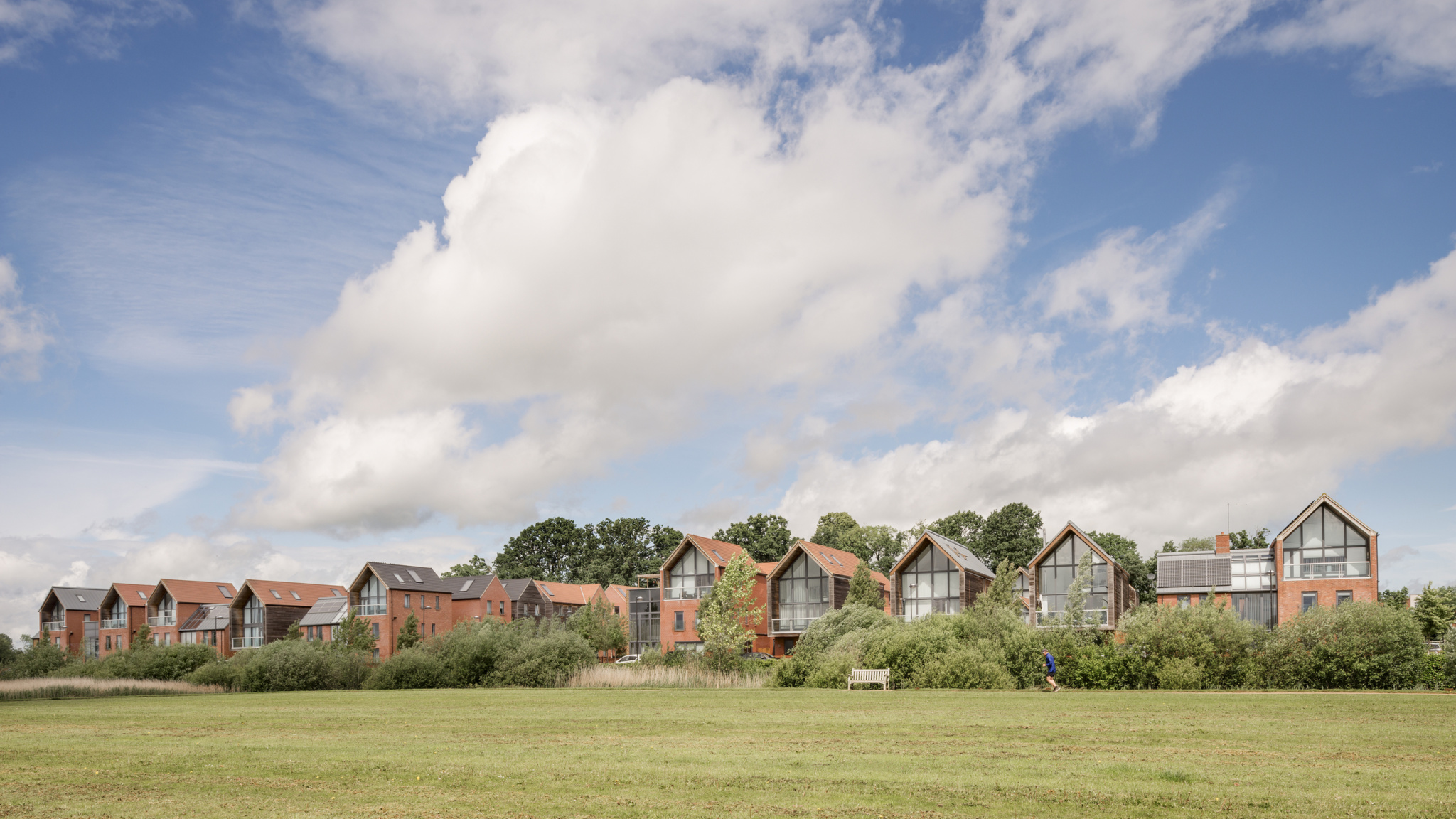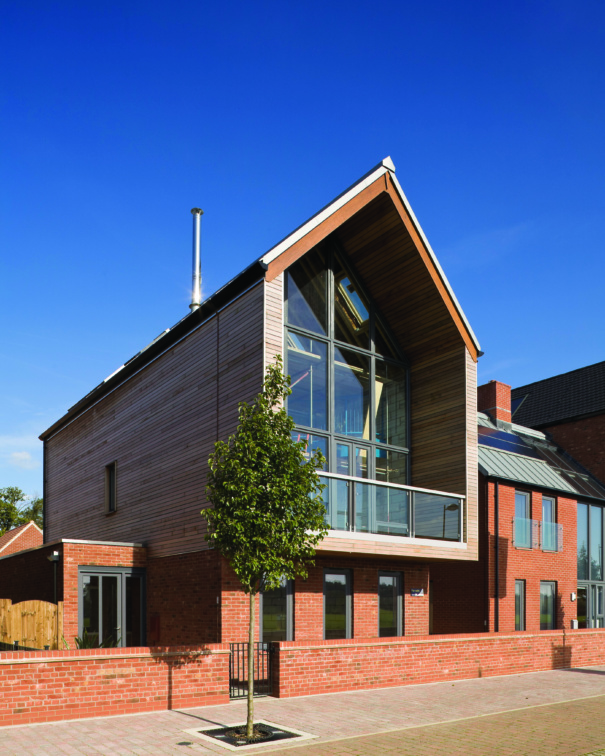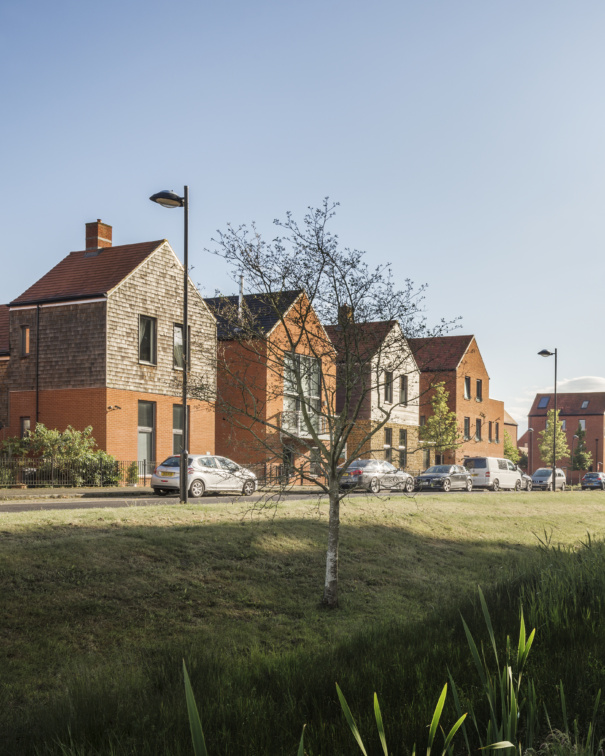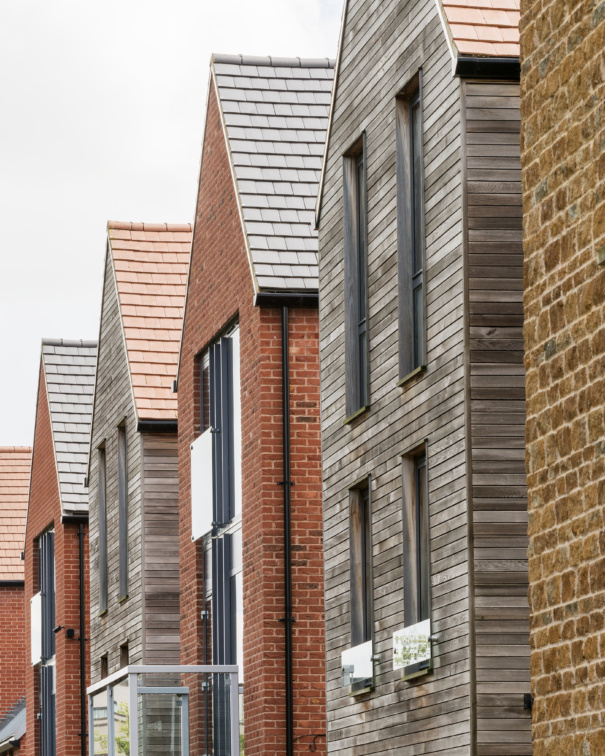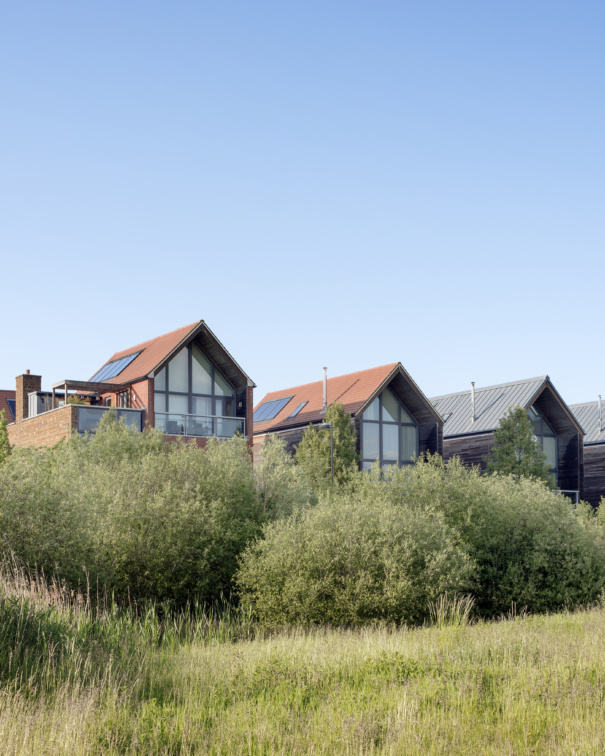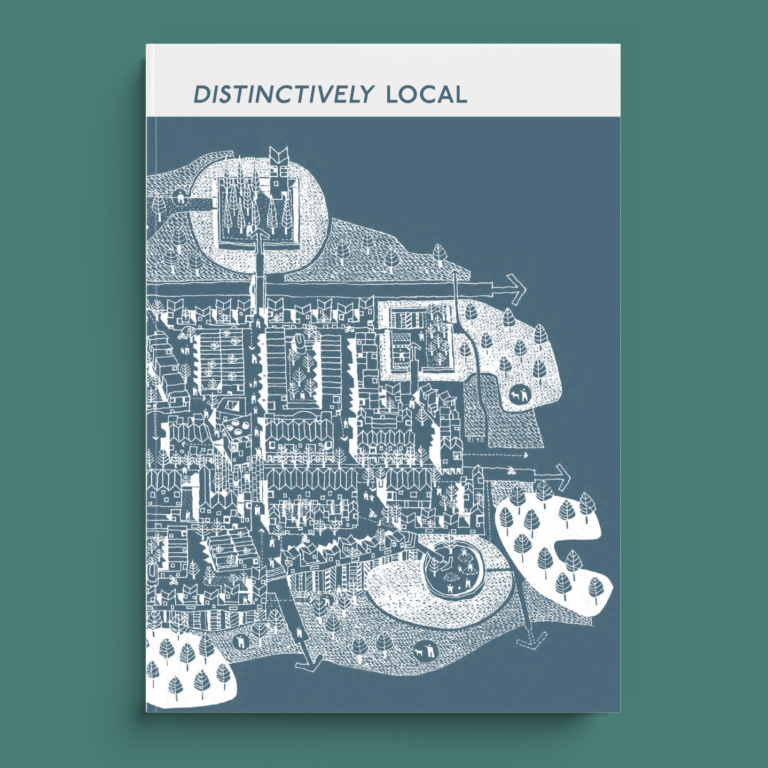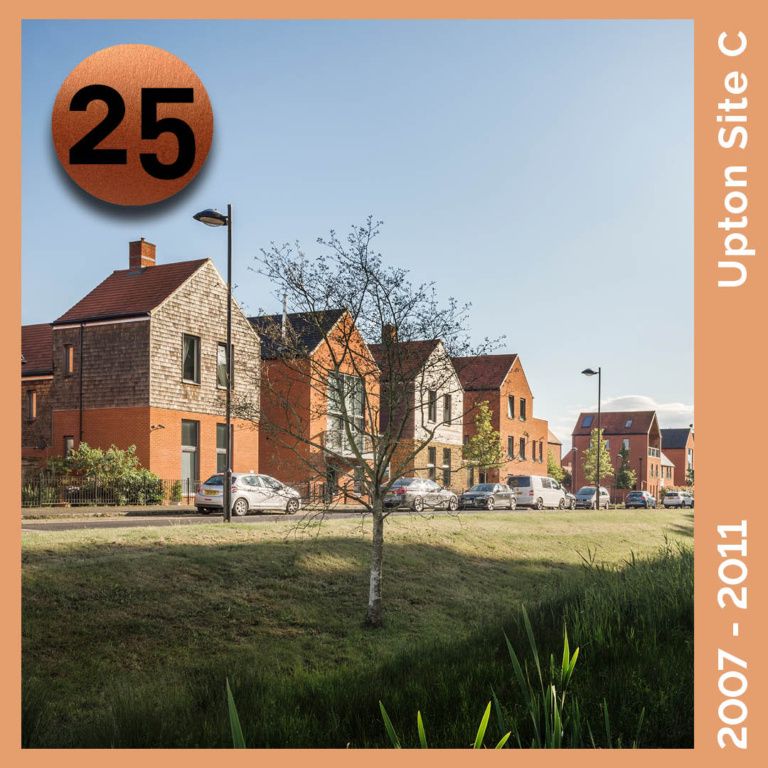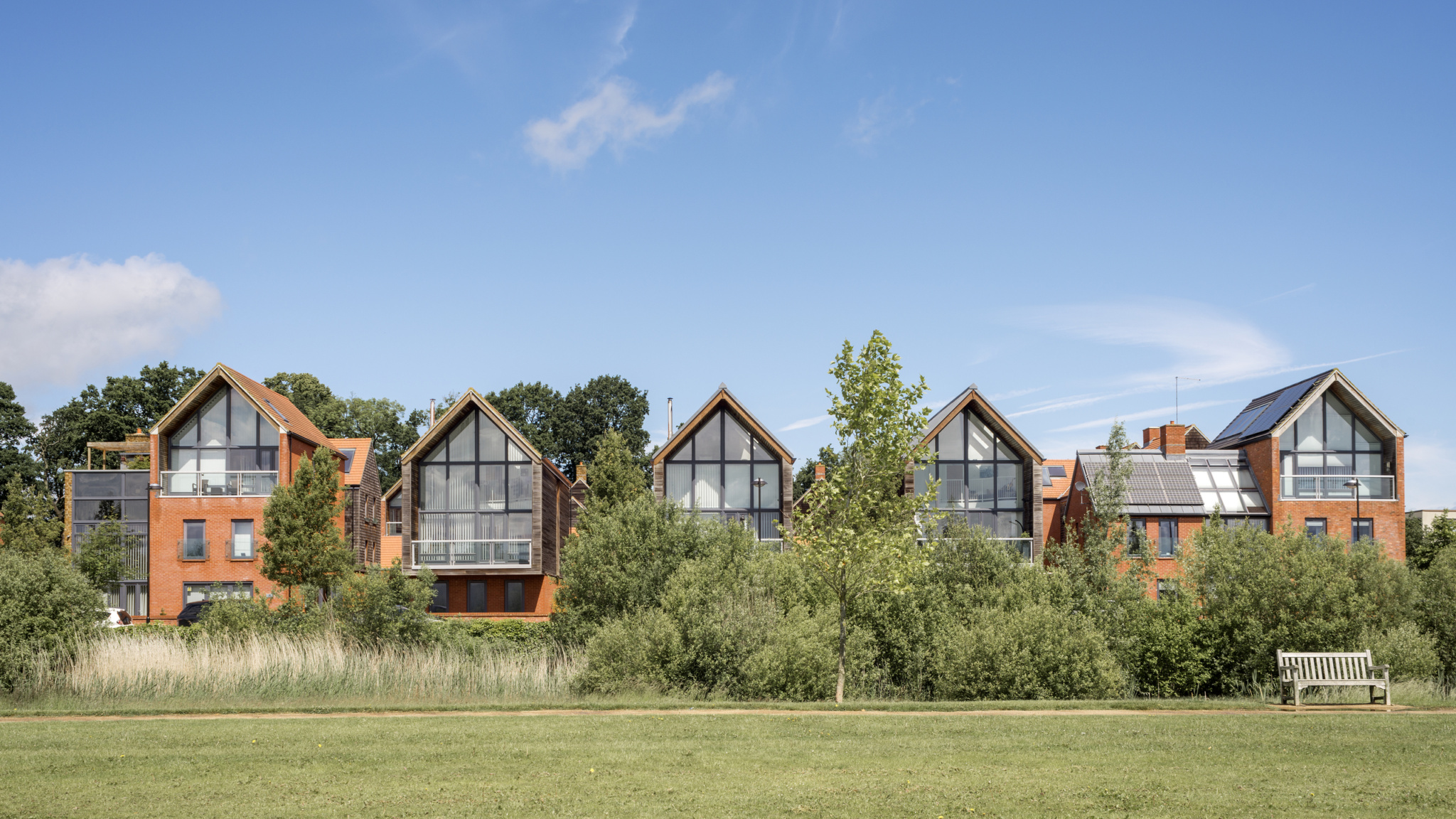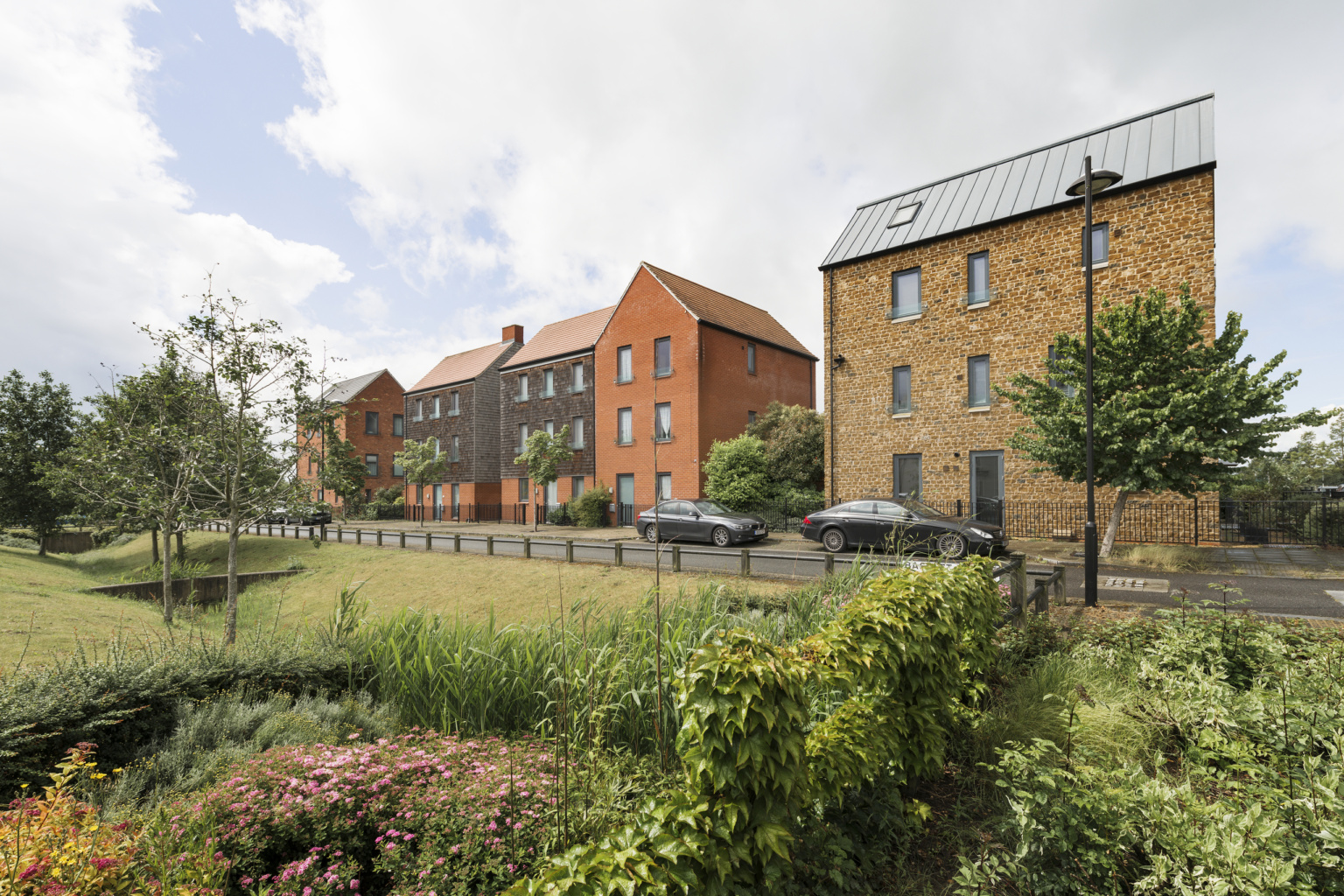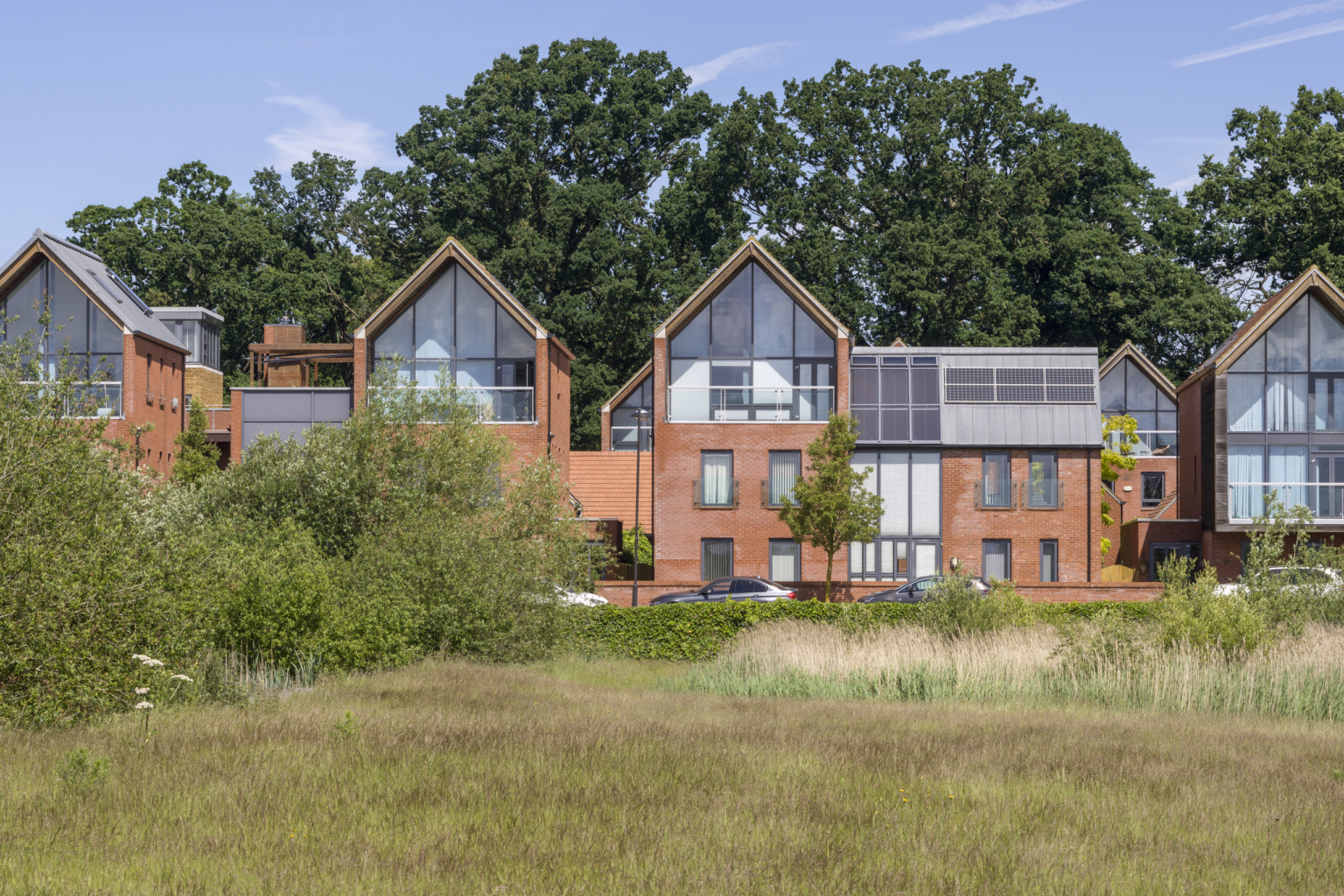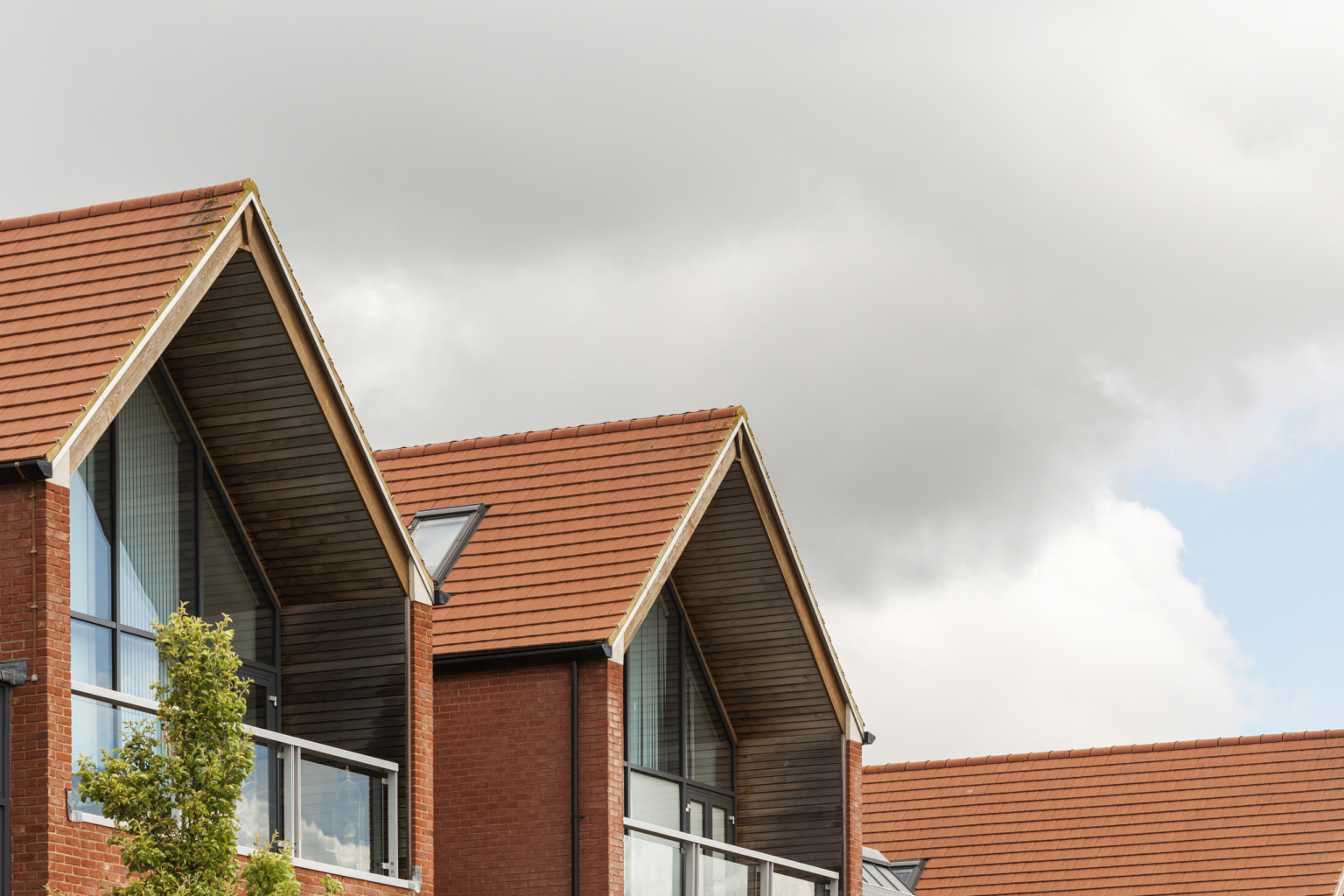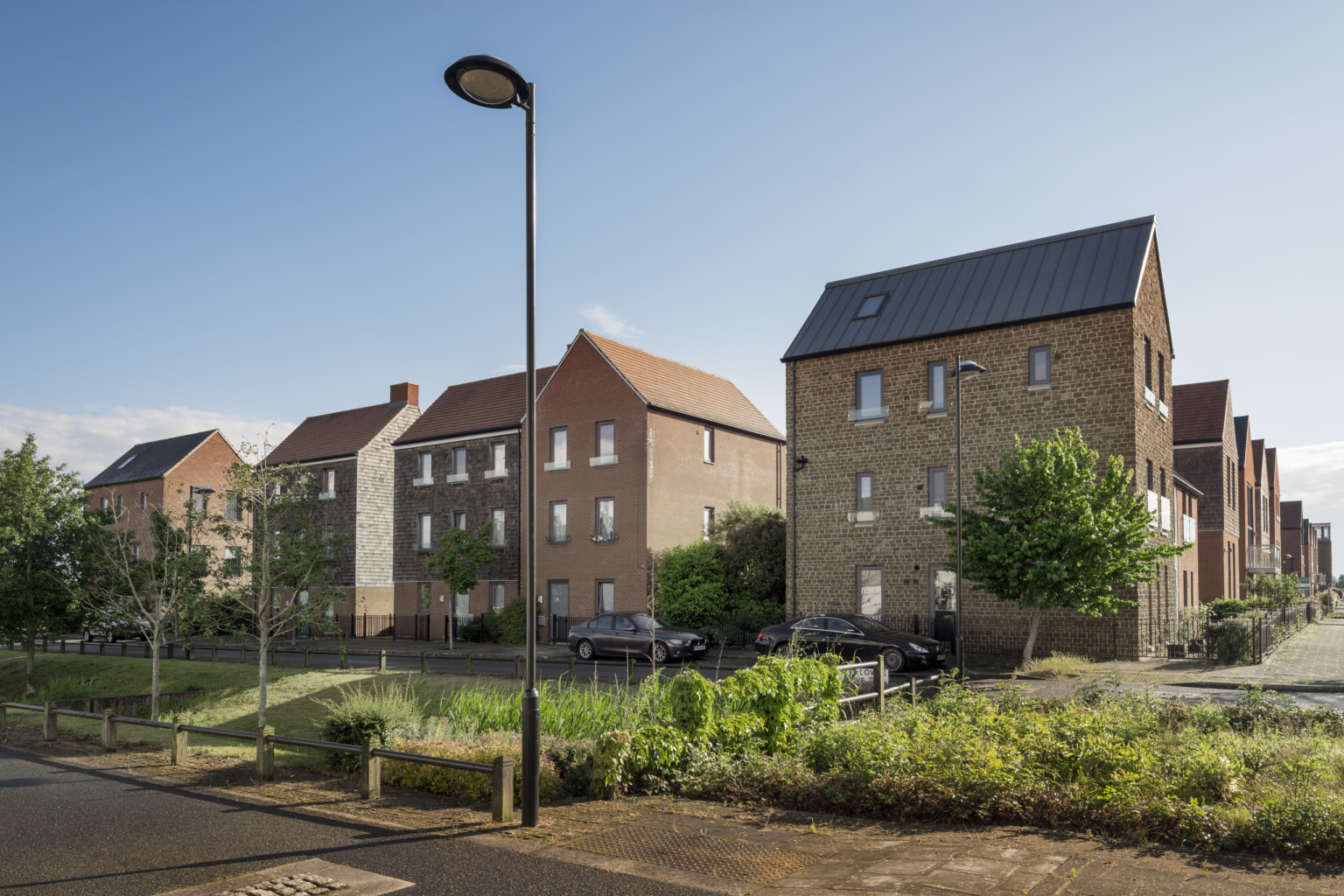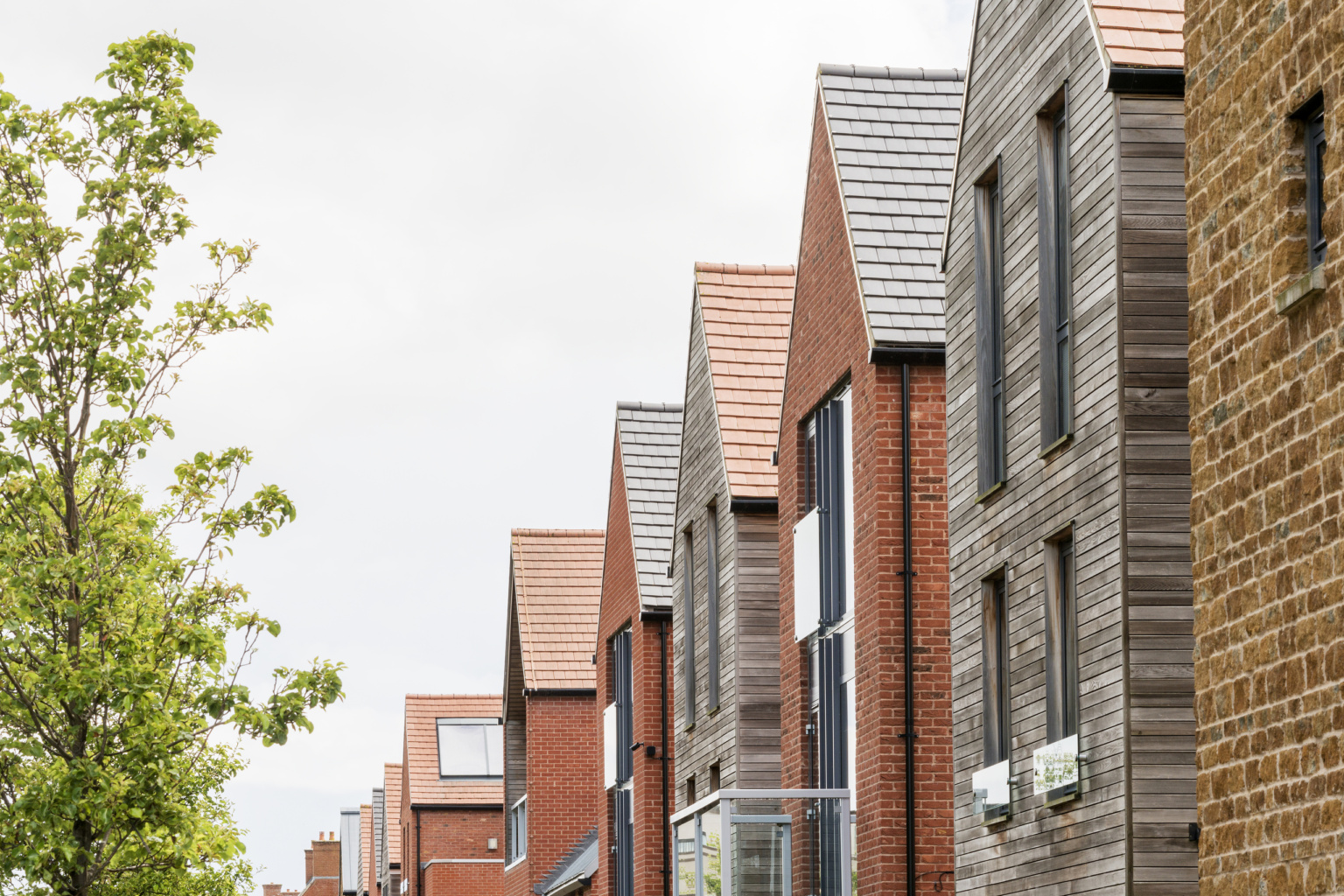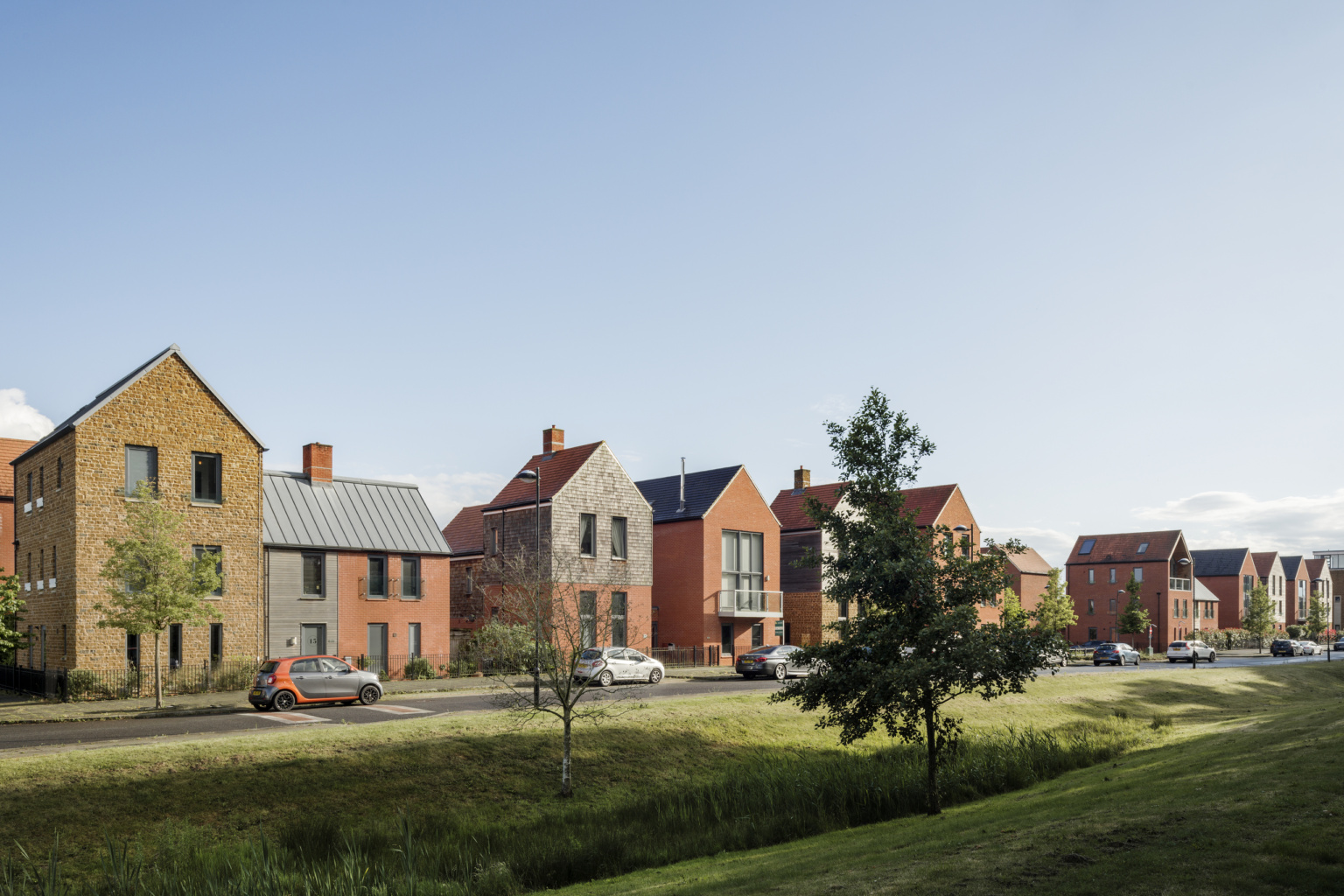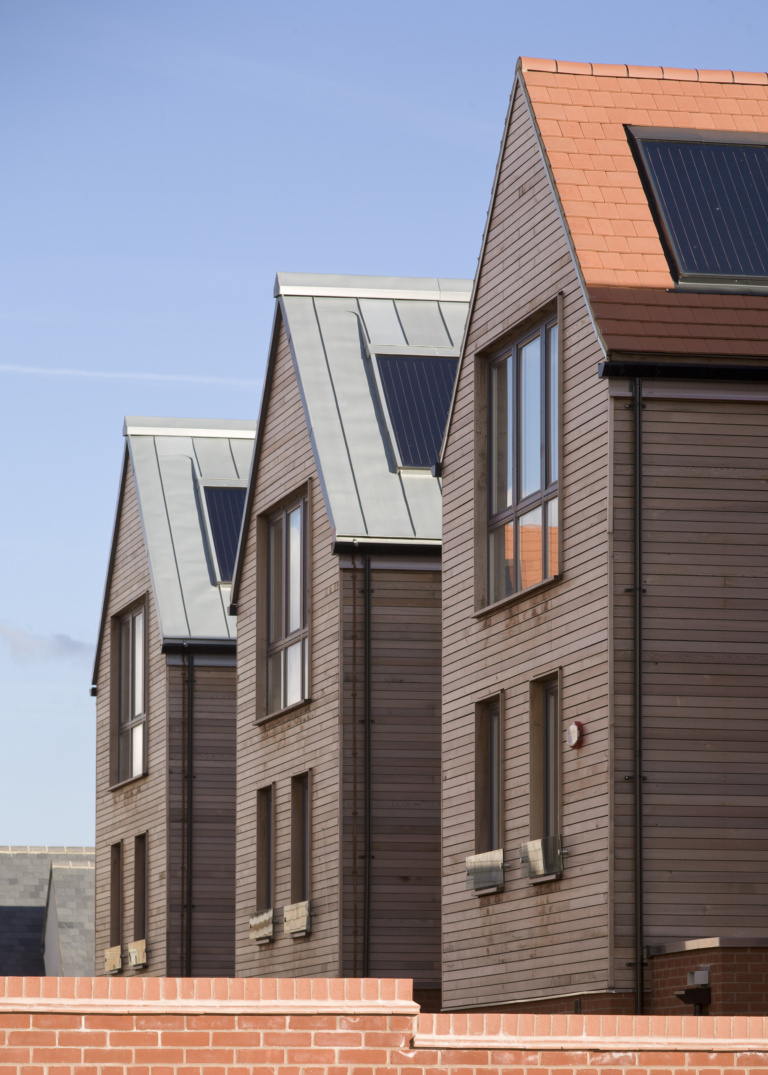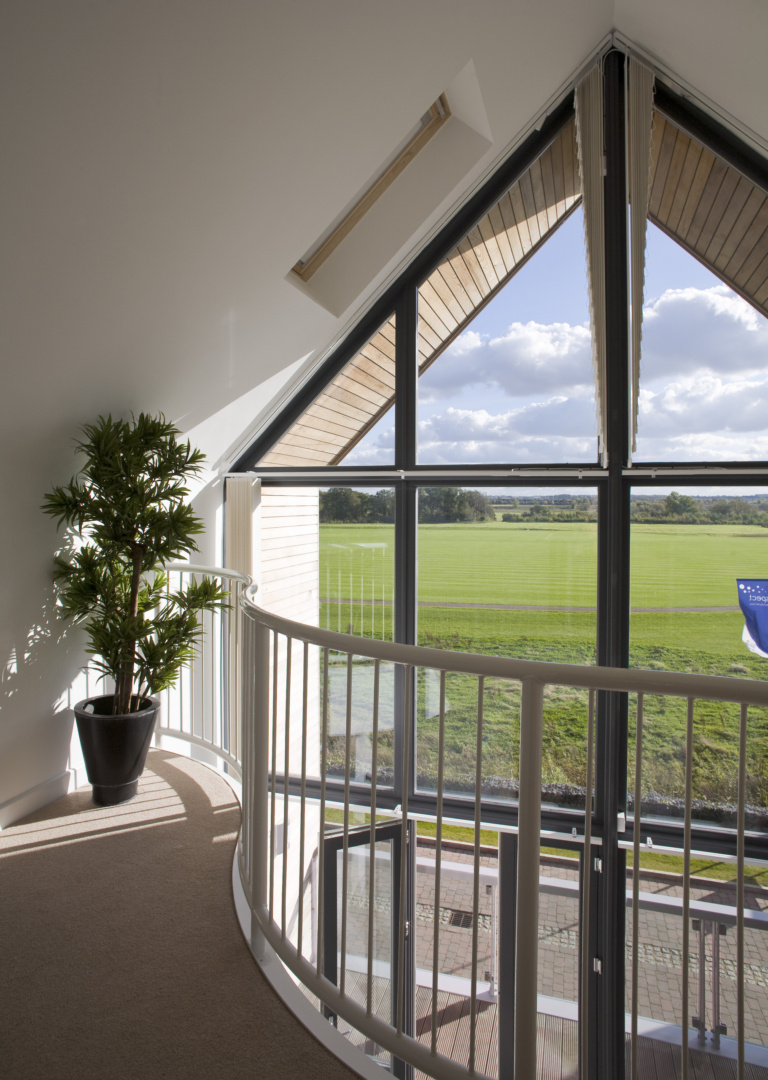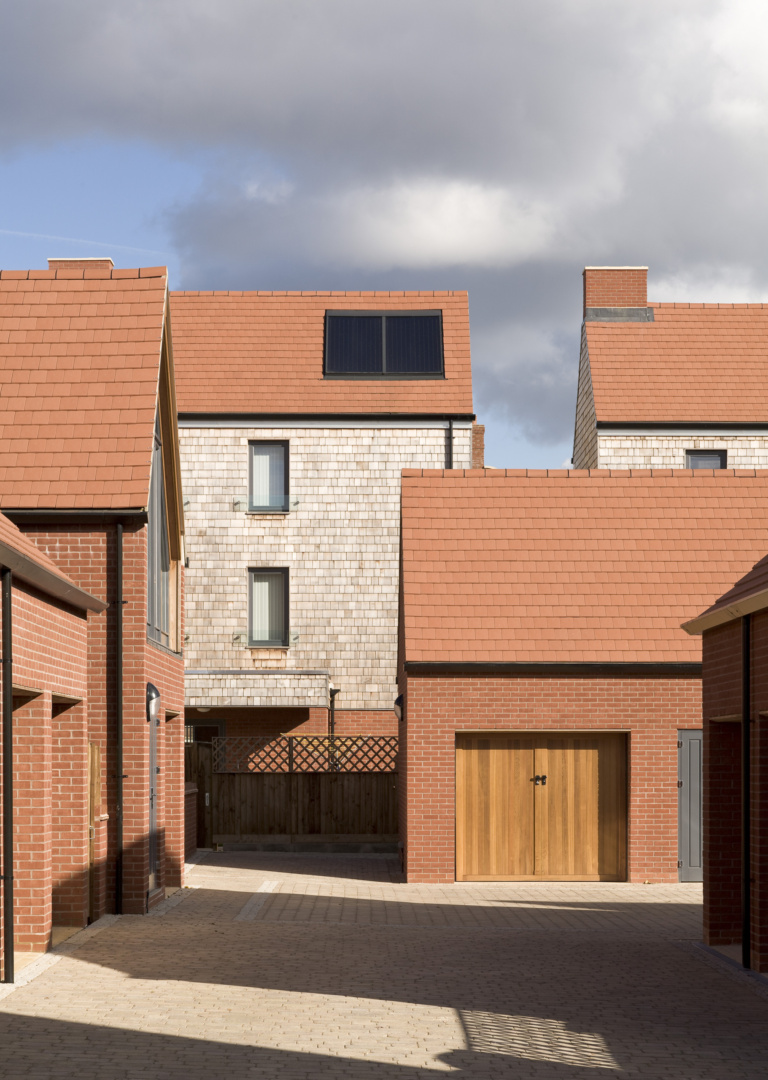The design of Upton comes out of an inspiring Design Code for a 1,500 home sustainable urban extension on the edge of Northampton. The code was written in 2005 and imagined a place with a school, community facilities and homes on the edge of extensive parkland and neighbouring countryside. The new neighbourhood was intended to balance design variety with consistency. Eight different sites, with a developer competition for each, provided the variety and the design code brought the consistency needed to achieve best practice in sustainable residential design.
Upton C, is on the edge of the site, looking south across the park and north across a retained strip of woodland. Our design approach made the most of this edge condition by allowing the homes to look out to nature.
The design embodies the distinctive character of the local vernacular
HTA were inspired by the familiar historic image of villas approached across farmland, on the edge of many a town or village. The layout respects the design code vision. There are three and four storey villas around the edge and garages, with ‘bonus rooms’ above, accessed from a central mews.
HTA looked at local vernacular precedents where all the houses were different but with the same language of form, scale and materials. The form of the homes is defined by 45 degree pitched roofs that face the park and create a distinctive silhouette. Each roof is the same 6m width we’d observed in local farm buildings. This keeps the scale consistent whilst the heights vary.
The strong expression of the roofline created a distinctive elevation that also shaded the large windows that maximise daylight. Stairs linking the ground and first-floor public rooms were larger and grander than those connected to top-floor master suites giving a chance to ‘discover’ a surprising space at the top of the house. There were ‘bonus rooms’ over the garages to the rear, providing space to work at home or for family members to live independently.
What makes it an EcoHomes Excellent standard scheme?
The final design shows how sustainability can improve the performance of the homes and impact on their appearance and integration with the setting.
For excellent heating and cooling, the site is arranged so every home is oriented 15 degrees from the south or west axis. Conservatories and living rooms are arranged for solar gain, optimising winter solar collection. To avoid overheating in the summer, shading is created by deep eaves which overhang the gables, provide shade to the interior, and frame the balconies. Natural ventilation has been maximised with double height spaces and roof windows.
Sustainable building materials have been selected, with other measures including green roofs, rainwater collection, and high insulation levels working in combination to achieve excellent sustainable performance.
The homes have excellent environmental credentials for their time. The best ‘fabric first’ specification is backed up with photovoltaic panels, solar water heaters, and green roofs. The lofty cathedral ceilings contribute to the excellent ventilation of the homes. These ceilings enable mezzanines and roof terraces which add to the day-to-day life of residents.
Adherence to the design code ensured the project remained true to the original masterplan vision at every phase of delivery. HTA was retained for the detailed design stages alongside many of the other design consultants, which helped particularly with the sustainable energy and overheating strategy.
The buildings have excellent environmental credentials, for their time, with the best ‘fabric first’ standards backed up by photovoltaic panels, solar water heaters and green roofs. These provide benefits to the occupiers as do the lofty cathedral ceilings, mezzanines and roof terraces.
Adherence to the design code ensured the project remained true to the original masterplan vision at every phase of delivery. HTA was retained for the detailed design stages alongside many of the other design consultants, which helped particularly with the sustainable energy and overheating strategy.
How do the materials create a cohesive yet diverse aesthetic?
The local geology provides stone and clay, and brick and stone buildings are common in the local area. These were the materials sourced and used for the buildings, with the addition of metal and timber where light weight zinc cladding was required. As a result, all homes are unique, but created from a consistent kit of parts. Upton is an early example of component led design which informs our continually evolving design approach.
Site C is composed of a mixture of detached and semi-detached villas. They are unified through a shared palette of complementary materials, proportions, roof forms and details, all derived from local studies of traditional house forms. Building upon the insights from these studies, the design of the homes embraced a range of measures aimed at promoting more sustainable lifestyles for their residents, embodying best practices in sustainable residential design.
How did the site arrangement enhance green continuity?
The landscape treatment and planting within the site is designed to maintain a sense of green continuity from one side to the other. If you live there you should feel you are in a landscape setting to which the wood and park belong. If you are looking at the site you should feel that this is a soft green edge to the Upton development. Devices to aid this include rich and varied garden planting, boundaries created from traditional and ‘earthy’ materials and green roofs. These extend the language generated by the Sustainable Urban Drainage Systems (SUDS) into the scheme.
HTA worked closely from design inception with sustainability advisors Whitbybird and the client to integrate both passive design strategies and active renewable energy sources to reduce water usage. These measures were implemented to lower energy demand and subsequently reduce carbon emissions, which became a key contribution for the development achieving an EcoHomes Excellent standard.

